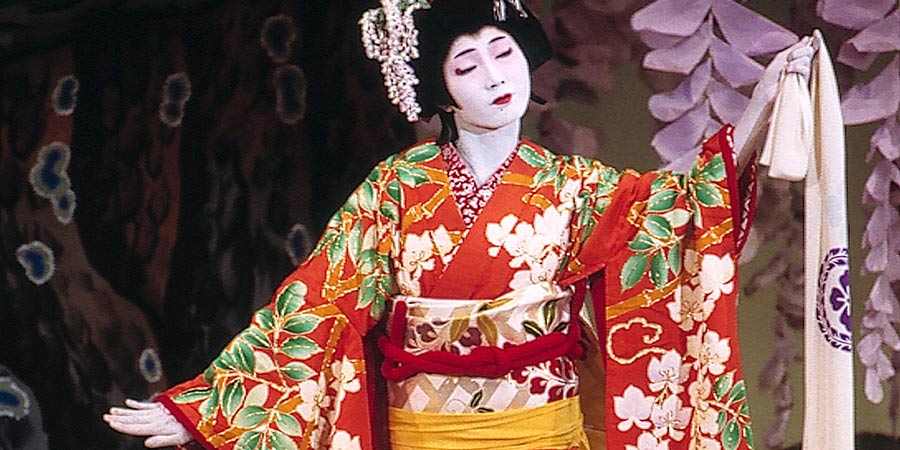From woodblock art to colourful manga, elegant Geishas to eccentric Harajuku fashion, a lot of things in Japan have changed throughout history. Japan has been, historically, one of the most reclusive countries in the world, with people actually being barred from entering or leaving the country for about 220 years (aside from the Dutch, but only in one place). Now, Japan is one of the most welcoming and wonderful tourist destinations for culture lovers around the world. Of course, not only has their policy of 'Sakoku' (closed country) changed, but so have rather a lot of other things…
Fashion
Around the world, Japan has always been known for its fashion. One of the best historic examples of this is the iconic Geisha. Although you can still see Geisha on Kyoto's Pontocho Alley, they are now more of a thing of the past. With their classic white make up, red lips, intricate kimonos, and perfectly styled black hairdos, Geishas were renowned for their dancing, music, and poetry, and were trained in various stages from the age of around six.
Nowadays, women's fashion in Japan is far more eccentric, with the most famous example being the fashion from the Harajuku district in Tokyo. From the muted Gothic Lolita and Aristocrat styles, to bright and colourful rock-inspired Visual Kei, to the almost upsettingly colourful Decora, fashion seekers in Japan can be sure to expect an absolutely wild time, with big hair, big skirts, and an extravagant use of colour.
Art
Art in Japan has dated back to the Jōmon era, way back in 11,000 BC. Exquisitely decorated vases and Dogū figurines have been found, adorned by swirls and line work that are still echoed in Japanese art today. The art form historic Japan is most associated with, however, is woodblock art, with the most famous example being the incredible 'The Great Wave off Kanagawa', printed by Hokusai between 1829 and 1833. Here, the swirls and lines that was first displayed by the Jōmon people can still be seen.
Now, art in Japan has taken a different stance. Some of the most famous exports from Japan are art forms: anime and manga. These brightly coloured, often exaggerated art forms have exploded in popularity all over the world, with about 3000 manga artists (or 'mangaka') in Japan alone. Some of the best examples of anime can be seen in the visually stunning films produced by Studio Ghibli. Some of the films, like Spirited Away, being nominated for highly sought after awards, including Academy Awards, and are consistently critically acclaimed for both their artwork and story line.
Technology
Like most countries around the world, Japan developed technology at the usual pace (with the help of China), so this section is mainly focusing on the utter explosion of technology to come out of Japan in the last couple of centuries. From gaming systems to televisions to cars, we even have Japan to thank for emojis, gel pens, and nearly every way of watching a film we can think of (which they developed with the Dutch, their long-time friends and trading partners). Our personal favourite of Japan's technology, though, has to be the magnificent Shinkansen or 'Bullet Train', the first high-speed train in the world.
The Japanese are famous for their Bullet Trains. This incredible high speed network started with the Tōkaidō Shinkansen in 1964, which took four hours to travel from Tokyo to Osaka, a distance of 312 miles - that's 78 miles per hour, a speed absolutely unheard of for ground travel at that time. Now, the bullet trains can reach several times that speed, with the world record for fastest rail travel on a Maglev (magnetically levitated) train being 375 miles per hour on the Yamanashi Test Track - a speed that has been untouched by any other method of rail travel.
What remains the same?
With all these things that have changed, the fashion, the technology, and the art and music, some things in Japan have remained satisfyingly the same. One of the biggest examples of this is the Japanese monarchy. The current monarch sitting on the Chrysanthemum Throne is Emperor Akihito, the 125th member of a line that has gone back thousands of years to 660 BC. Although throughout the centuries the leadership has transferred from the Emperor to the Shogun (military leader) and then back to the Emperor, this dynasty is recognised for being the oldest in the world. Of course, we can't mention Japan without mentioning the oldest hotel in the world - the Nishiyama Onsen Keiunkan, which has been run by the same family for 46 generations after being founded in 718 AD.
Japan is also famed for its ancient traditions, from tea ceremonies to Cherry blossom festivals to the strangely undressed Hadaka Matsuri, a time where paper talismans are given by priests to promote good luck. The art may change, the technology may leap far, far into the future, and the fashion may get even more concerning bright, but at its heart, beautiful Japan is one of the most traditional and stunning countries in the world.






